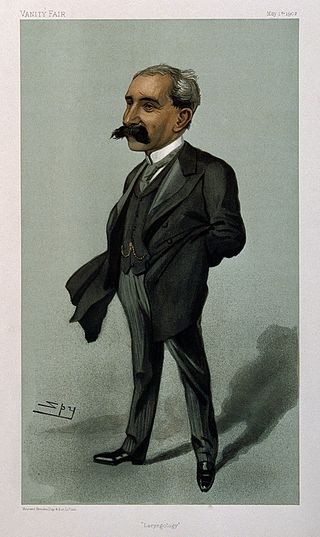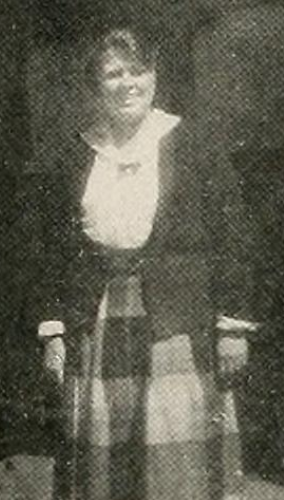
Cholesteatoma is a destructive and expanding growth consisting of keratinizing squamous epithelium in the middle ear and/or mastoid process. Cholesteatomas are not cancerous as the name may suggest, but can cause significant problems because of their erosive and expansile properties. This can result in the destruction of the bones of the middle ear (ossicles), as well as growth through the base of the skull into the brain. They often become infected and can result in chronically draining ears. Treatment almost always consists of surgical removal.

The dilator naris muscle is a part of the nasalis muscle. It has an anterior and a posterior part. It has origins from the nasal notch of the maxilla and the major alar cartilage, and a single insertion near the margin of the nostril. It controls nostril width, including changes during breathing. Its function can be tested as an analogue for the function of the facial nerve (VII), which supplies it.

The stylomastoid foramen is a foramen between the styloid and mastoid processes of the temporal bone of the skull. It is the termination of the facial canal, and transmits the facial nerve, and stylomastoid artery. Facial nerve inflammation in the stylomastoid foramen may cause Bell's palsy.

Julius Mount Bleyer was a New York doctor who specialized in laryngology who took a keen interest in medical jurisprudence. He studied the methods used for capital punishment and as a member of a commission, was among the first to propose lethal injections in 1888. He pointed out in The Medico-Legal Journal, the problems with other methods of executing death sentences including decapitation and electrocution. Lethal injections were however not used until the early 1980s.
Nelson Yuan-Sheng Kiang was the founder and former director of the Eaton-Peabody Laboratory of Auditory Physiology at the Massachusetts Eye and Ear Infirmary and professor emeritus of Otology and Laryngology at the Harvard Medical School and also professor emeritus at the Massachusetts Institute of Technology. He was also emeritus in Neurology at the Massachusetts General Hospital and a trustee of the Massachusetts Eye and Ear Infirmary.
Radu Lucian Sulica is a Romanian-born American laryngologist and author. He currently serves as Professor and Chief, Laryngology and Voice Disorders at the Sean Parker Institute for the Voice at Weill Cornell Medical College in New York City. Sulica has published several books in the field, including Vocal Fold Paralysis, the compendium on this dominant topic in laryngology. He has written a review of a sub-category of vocal fold paralysis, the idiopathic cases.

Richard Norris Wolfenden (1854-1926) was an English physician and oceanographer.
Sir Victor Ewings Negus, MS, FRCS was a British surgeon who specialised in laryngology and also made fundamental contributions to comparative anatomy with his work on the structure and evolution of the larynx. He was born and educated in London, studying at King's College School, then King's College London, followed by King's College Hospital. The final years of his medical training were interrupted by the First World War, during which he served with the Royal Army Medical Corps. After the war, he qualified as a surgeon and studied with laryngologists in France and the USA before resuming his career at King's College Hospital where he became a junior surgeon in 1924.

Félix de Lapersonne was a French ophthalmologist.
Cochlear Bone Anchored Solutions is a company based in Gothenburg, Sweden that manufactures and distributes bone conduction hearing solutions under the trademark Baha. The company was founded in 1999 under the name Entific Medical Systems. When Cochlear bought the company in 2005, the name was changed to Cochlear Bone Anchored Solutions. The acronym "BAHA" was trademarked into Baha, as it is not considered a hearing aid by insurance companies.
Laryngotracheal reconstruction is a surgical procedure that involves expanding or removing parts of the airway to widen a narrowing within it, called laryngotracheal stenosis or subglottic stenosis.
Margaret Ruth Dix was a British neuro-otologist. With Charles Skinner Hallpike, she published important research on vertigo and described the Dix–Hallpike test.

Arthur Logan Turner FRCSEd FRSE LLD was a Scottish surgeon, who specialised in diseases of ear, nose and throat (ENT) and was one of the first surgeons to work at the purpose-built ENT Pavilion at the Royal Infirmary of Edinburgh. During his surgical career he published a series of clinical papers and wrote a textbook of ENT surgery which proved popular around the world and ran to several editions. After retiring from surgical practice he pursued his interest in the history of medicine writing a biography of his father and histories of the Royal Infirmary of Edinburgh and the University of Edinburgh. As his father had been before him, he was elected President of the Royal College of Surgeons of Edinburgh. His collection of pathological specimens was donated to Surgeon's Hall Museum in Edinburgh..

Sir Felix Semon was a German-British pioneer in neurobiology and a prominent laryngologist in the United Kingdom. He is responsible for Semon's law.

Sir James Dundas-Grant KBE, MD, FRCSEd, FRCS was a British ear, nose and throat surgeon. He was surgeon to a number of London hospitals and surgeon to several institutions. He was regarded as a prolific writer about a variety of topics within his speciality and devised a number of surgical instruments. In addition to his clinical practice he was president of several surgical speciality societies and was knighted in 1920.
Muaaz Tarabichi is a Syrian otolaryngologist, lecturer, researcher, and author. He is recognized around the world as the father of endoscopic ear surgery. He is the co-founder of Tarabichi Stammberger Ear and Sinus Institute. He was elected as the chairman of the International Advisory Board of the American Academy of Otolaryngology–Head and Neck Surgery.

Madelaine Ray Brown was an American neurologist based in Boston, Massachusetts. She specialized in the treatment of Ménière's disease, multiple sclerosis, and other neurological conditions. She also had multiple sclerosis for most of her adult career, and used a wheelchair and other adaptations to maintain a full schedule of teaching and research.
Alfonso Elkin Cumberbatch FRCS was an ear surgeon and president of the Otological Society of the United Kingdom. At his endorsement in 1907 it merged with the Royal Society of Medicine to became the Section of Otology, on the condition that it remained separated from the specialty of the throat, with the specialty of the nose welcome to join either.










